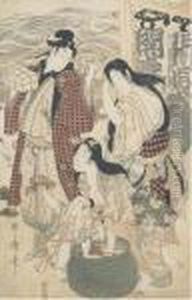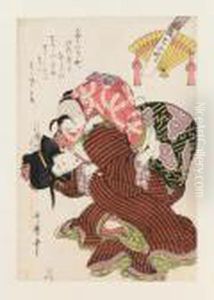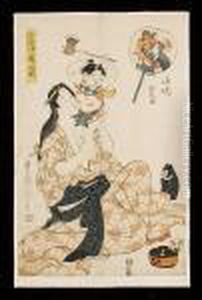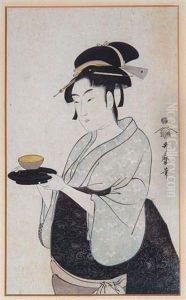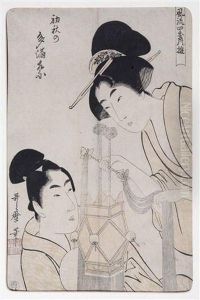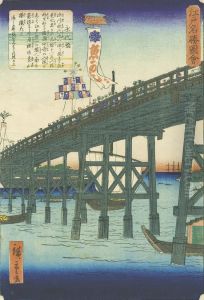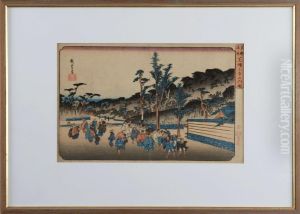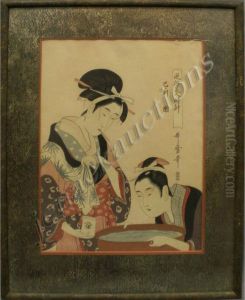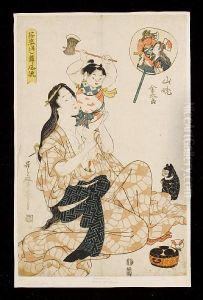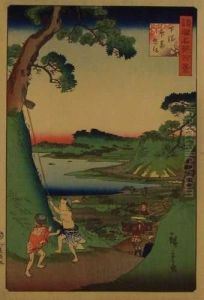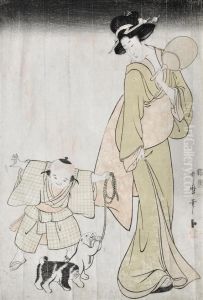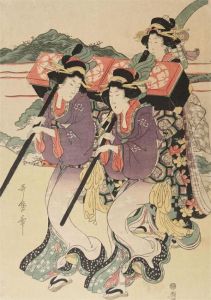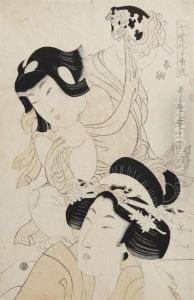Utamaro Ii Kitagawa Paintings
Utamaro II Kitagawa was a distinguished Japanese artist known for his contributions to the ukiyo-e genre of woodblock prints and paintings. Born in 1753, Utamaro II was not directly related by blood to the famous Utamaro Kitagawa (usually known as Utamaro I), who was renowned for his beautiful depictions of women. However, Utamaro II took on the master's name and style, continuing the legacy of delicate and intricate portrayals of female beauty that had been established by his predecessor.
Utamaro II's career flourished during the late 18th and early 19th centuries, a period that is often considered the golden age of ukiyo-e. His works, much like those of Utamaro I, focused primarily on the female form, capturing the subtleties of expressions and the elegance of fashion in the Edo period. He was adept at depicting the daily lives and intimate moments of women, from the courtesans of the Yoshiwara district to the wives and daughters of samurai and merchants.
Despite his efforts to continue the artistic traditions of Utamaro I, Utamaro II's works are often noted for their distinct qualities. While they bear a resemblance to his namesake's style, they also reflect his own interpretations and the evolving tastes of the Edo period's culture. His prints are characterized by a refined use of color and line, contributing to the development of the ukiyo-e genre.
Utamaro II's contributions to Japanese art were significant, though his fame and recognition have been somewhat overshadowed by the towering legacy of Utamaro I. Nonetheless, his works are an important part of the ukiyo-e tradition, offering insights into the cultural and societal dynamics of his time. Utamaro II passed away in 1806, but his artistic legacy continues to be celebrated by art historians and enthusiasts of Japanese art.
